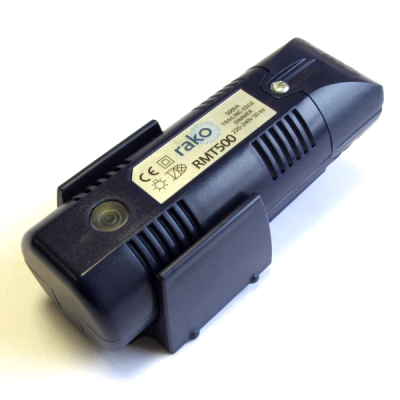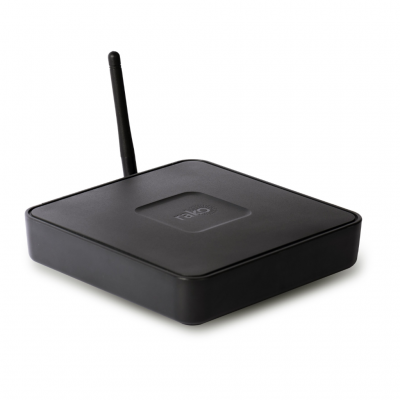
Top UK Trends in Period Kitchen Lighting
Importance of Lighting in Kitchen Design: Kitchen lighting is a crucial element in residential design, as it influences not only the aesthetic appeal but also the functionality of a space. Proper lighting enhances the kitchen’s appearance, creates a welcoming atmosphere and ensures safety during food preparation and cooking.
In the UK, period kitchens have become particularly popular among homeowners who appreciate the charm and elegance of traditional designs. This growing interest has inspired a renewed focus on period kitchen lighting, which plays a significant role in effectively blending style, history, and practicality.
Overview of UK Residential Period Kitchen Lighting Design: From rustic country cottages to grand Victorian homes, period kitchens in the UK boast a diverse range of styles and features. Lighting design in these spaces typically considers the architecture and historical context while incorporating modern technology and preferences.
Understanding Period Kitchen Lighting
Defining Period Lighting: Period lighting refers to light fixtures and designs that emulate the styles and techniques of specific historical eras. Within the context of period kitchens, this often involves incorporating distinctive features, materials, and colour schemes that reflect a bygone time. Examples of popular UK period kitchen styles include Georgian, Victorian, Edwardian, and Arts and Crafts.
Historical Overview of Kitchen Lighting in the UK: Throughout history, kitchen lighting design in the UK has evolved alongside advancements in technology and shifting cultural preferences. Early kitchens relied mainly on natural daylight or crude oil lamps for illumination. With the transition to gas lighting in the late 19th century, kitchens became brighter and more functional. The advent of electric lighting in the early 20th century further revolutionized kitchen design and laid the foundation for today’s diverse array of lighting options.
Key Elements of Period Kitchen Lighting Design
Types of Lighting: Task, Ambient, and Accent: A well-lit period kitchen should incorporate a blend of task, ambient, and accent lighting. Task lighting is essential for illuminating work areas like countertops and stovetops. Ambient lighting establishes the overall brightness and mood in the kitchen, while accent lighting highlights decorative features or architectural elements.
Period Lighting Fixtures: From Pendant Lights to Wall Sconces: Period lighting fixtures come in a wide range of shapes, sizes, and styles that replicate historical influences. Popular choices include pendant lights, which hang from the ceiling and provide focused illumination; chandeliers, which create a statement in larger kitchens; wall sconces, which offer atmospheric ambiance; and flush-mounted fixtures, which conserve space in smaller rooms.
Material and Colour Choices in Period Lighting: Period kitchen lighting design often revolves around materials and colours that reflect the specific era being emulated. Common choices include brass, wrought iron, or bronze for fixtures and warm tones like amber or ivory for glass shades. When selecting materials and colours, homeowners should consider how they complement the overall design of their period kitchen.
Planning Your Kitchen Lighting
Assessing Your Kitchen Space and Needs: Before diving into the world of period kitchen lighting, it’s crucial to assess your kitchen space and identify your lighting needs. Consider factors like the size of the room, ceiling height, layout, and natural light sources. Also, list the specific areas in your kitchen where task, ambient, or accent lighting is needed.
Positioning Your Lights for Optimal Illumination: As you plan your period kitchen lighting design, be mindful of where each fixture will be placed to provide optimal illumination and visual balance. For example, task lighting should be positioned directly above work areas to prevent shadows, while ambient lighting is best placed along the perimeter of the room. Similarly, accent lighting can be effectively employed above cabinetry, around focal points, or beneath shelving.
Balancing Task, Ambient, and Accent Lighting: Achieving the perfect balance between task, ambient, and accent lighting is essential for creating a well-rounded period kitchen lighting scheme. A common strategy is to use layered lighting, incorporating different types of fixtures and adjusting the intensity of each layer to meet the specific needs and preferences of the homeowner.
Period Kitchen Lighting Ideas
Lighting for Small Kitchens: In small period kitchens, carefully chosen lighting can make the space feel larger and more inviting. Using light-coloured shades and materials will help diffuse and reflect light, while wall sconces or mounted fixtures can conserve valuable floor space. Pendant lights with adjustable heights are also a versatile option for compact areas.
Island Lighting Ideas: Kitchen islands are a popular feature in many period kitchens, and selecting the right lighting for this area is essential for form and function. Pendants or chandeliers with period charm can create a focal point over the island, while task lighting should be incorporated to facilitate cooking and food preparation activities.
Wall Mounted Lighting Options: Wall-mounted lighting can provide both practical illumination and decorative appeal in period kitchens. Sconces with ornate detailing or warm-toned glass shades can offer ambient lighting while enhancing the historic atmosphere of the room. Mounted swing-arm lamps are another flexible choice, providing adjustable task lighting for specific areas.
Ceiling Lighting Ideas: For period kitchens with high ceilings, chandeliers or pendant lights can make a dramatic design statement while providing sufficient ambient light. Flush-mounted fixtures are also ideal for lower ceilings, offering a discreet and elegant lighting solution. When choosing ceiling lighting, consider the scale, style, and proportions of the fixtures in relation to the kitchen space.
Incorporating Modern Elements in Period Kitchen Lighting
The Role of LED Lights in Period Kitchens: LED technology offers energy efficiency, longevity, and better quality of light than traditional incandescent bulbs. Incorporating LED lights into period kitchen lighting design can be done subtly, either by using LED bulbs within antique-style fixtures or by integrating modern elements that complement the overall aesthetic.
Modern Lighting Ideas for Period Kitchens: While period kitchens celebrate historical charm, incorporating contemporary lighting elements can add an interesting contrast and provide up-to-date functionality. Examples include installing under-cabinet LED strip lighting for task illumination or using sleek track lighting to spotlight artwork or architectural features.
UK residential period kitchen lighting design encompasses a vast range of styles and considerations, with the ultimate goal of creating a harmonious blend of history, style, and practicality. By taking the time to understand the different aspects of period lighting and carefully planning a balanced lighting scheme, homeowners can successfully transform their kitchen into a characterful, functional, and inviting space.
The Impact of Well-Designed Kitchen Lighting: Investing in a well-designed period kitchen lighting scheme not only enhances the aesthetic appeal of the space but also significantly improves its functionality and overall atmosphere. With the right combination of task, ambient, and accent lighting – along with carefully selected fixtures, materials, and colours – homeowners can experience the undeniable charm and elegance of a beautifully illuminated period kitchen.

Expanding the Possibilities: Lighting Controls in Period Kitchens
In addition to selecting the right fixtures, materials, and colours for your period kitchen lighting design, the use of lighting controls can further enhance the atmosphere and functionality of the space. Modern innovations like mood lighting, light dimming, lighting automation, and app control offer a wealth of possibilities for period homeowners wishing to fine-tune their lighting environment and add convenient features.
Mood Lighting: Setting the Scene
Mood lighting allows homeowners to create different atmospheres within their period kitchen by adjusting the intensity and colour of the light. With the right controls and fixtures, a cosy, intimate dining experience can be achieved or a bright, energetic cooking environment can be established, all at the touch of a button.
To implement mood lighting in your period kitchen, consider using dimmable LED bulbs or fixtures with multiple lighting options. Pair these with a dimmer switch or smart lighting controls to adjust the lighting based on your needs and preferences.
Light Dimming: Perfectly Tailored Ambiance
Light dimming is an indispensable feature for creating a versatile and welcoming period kitchen space. By adjusting the intensity of the light either through a wall-mounted dimmer switch or a smart control system, homeowners can seamlessly transition from a bright, well-lit workspace to a soft, ambient atmosphere perfect for a relaxing evening meal.
When incorporating dimming functionality into your period kitchen lighting design, ensure that the fixtures you choose are compatible with dimming technology. Many LED bulbs and modern fixtures are explicitly designed for use with dimmers, providing smooth adjustments without flickering or reduced lifespan.
Lighting Automation: Hands-Free Innovation
Lighting automation is becoming increasingly popular in modern homes, and this technology can also be integrated into period kitchen lighting design for added convenience and efficiency. Automated lighting systems use sensors, timers, or programmable controls to adjust the lighting according to pre-set preferences or specific conditions.
For example, motion sensors can automatically turn on the lights when someone enters the kitchen, while a programmable schedule can switch off the lights at a specific time each night. Integrating lighting automation into your period kitchen offers numerous practical benefits such as energy savings, increased safety, and flexibility to adapt your lighting based on your lifestyle.
Lighting App Control: Total Customisation at Your Fingertips
Another innovation in lighting control technology is the use of smartphone apps to manage and personalise your kitchen lighting environment. With app control, you can turn your lights on or off, adjust the brightness, change colours, or activate preset scenes all from your phone or tablet.
By combining app control with compatible fixtures and smart bulbs, you'll have ultimate control and customisation of your period kitchen lighting design. Although it may seem incongruous with traditional aesthetics, incorporating app-controlled lighting can be achieved in a way that maintains the historical charm of your period kitchen while taking advantage of modern technology.
When integrating lighting controls into your period kitchen, aim for a balanced blend of style, function, and convenience. By combining traditional fixtures with modern lighting technologies, you can create a flexible, welcoming, and energy-efficient space that truly epitomises the best of both worlds.

FAQs
Can period lighting designs work in a modern kitchen?
Yes, period lighting designs can complement and enhance a modern kitchen. By carefully selecting fixtures and materials that complement the overall design style of the kitchen, homeowners can create a unique blend of contemporary and historical charm. Pendant lights, chandeliers, or wall sconces with period-inspired designs can serve as a focal point, while also providing functional illumination.
What are some common types of period lighting fixtures used in British period kitchens?
Common period lighting fixtures found in British period kitchens include pendant lights, chandeliers, wall sconces, and flush-mounted fixtures. These options come in various materials, colours, and styles that mimic the historical influences of Georgian, Victorian, Edwardian, and Arts and Crafts periods.
How can lighting controls be used in period kitchens?
Lighting controls, such as dimmer switches, lighting automation systems, and smartphone app control, can enhance the atmosphere and functionality of period kitchens. They enable homeowners to create mood lighting, adjust lighting intensity, or automate their lighting based on schedules or specific conditions. Incorporating modern controls with period lighting can be done while preserving the historical charm of the kitchen.
How many different types of lighting should be incorporated into a period kitchen?
Ideally, a well-lit period kitchen should incorporate a blend of task, ambient, and accent lighting to create a functional and appealing space. Task lighting is essential for illuminating work areas, while ambient lighting sets the overall brightness and mood. Accent lighting highlights decorative features or architectural elements and adds depth to the overall lighting scheme.
Is it possible to make period kitchen lighting eco-friendly and energy-efficient?
Yes, period kitchen lighting can be eco-friendly and energy-efficient by utilising LED technology. LED lights offer many benefits, such as reduced energy consumption, longer lifespan, and better quality of light compared to traditional incandescent bulbs. Period homeowners can incorporate LED lights into their kitchen lighting design by using LED bulbs within antique-style fixtures or integrating modern elements that complement the overall aesthetic.

Rako Lighting Controls Systems

Rako Keypads

Rako Dimmers














